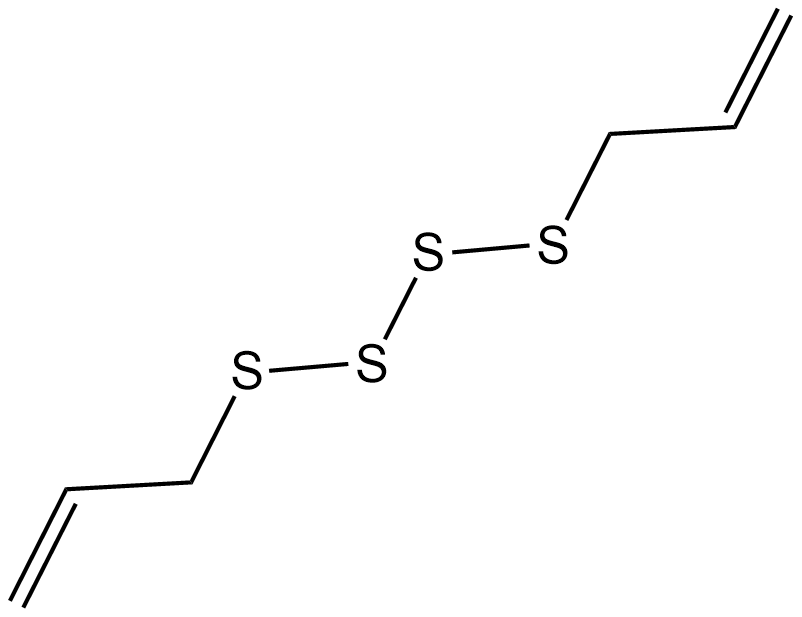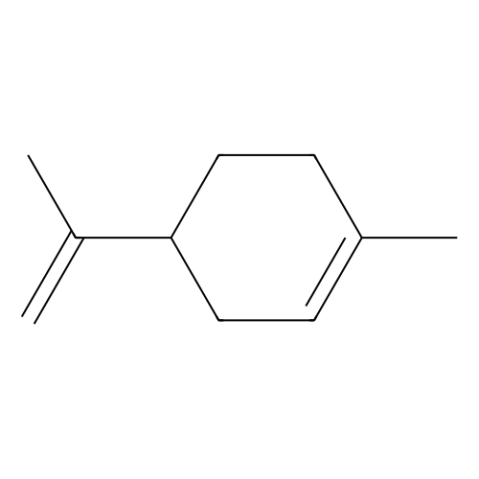Recombinant Proteins(重组蛋白)
Recombinant proteins are a new combination of genes that forms DNA. Recombinant DNA technology allows for the production of wild type and modified human and mammalian proteins at bulk quantities. Recombinant proteins are made from cloned DNA sequences which usually encode an enzyme or protein with known function
Recombinant proteins are made through genetic engineering, also called gene splicing or recombinant DNA technology. By putting human, animal or plant genes into the genetic material of bacteria, mammalian or yeast cells, these microorganisms can be used as factories or producers to make proteins for medical, academic and research uses.
A vector is simply a tool for manipulating DNA and can be viewed as a "transport vehicle" for the production of proteins from specific DNA sequences cloned into them. Purification and expression of a protein can sometimes be quite complicated & time-consuming, therefore an additional tag is used in addition to the specific DNA sequence which will facilitate the purification & expresion of the recombinant protein.
Recombinant Proteins are proteins that their DNA that has been created artificially. DNA from 2 or more sources which is incorporated into a single recombinant molecule. The DNA is first treated with restriction endonuclease enzyme which the ends of the cut have an overhanging piece of single-stranded DNA. These are called "sticky ends" because they are able to base pair with any DNA molecule containing the complementary sticky end. DNA ligase covalently links the two strands into 1 recombinant DNA molecule.
Recombinant DNA molecule must be replicated many times to provide material for analysis & sequencing. Producing many identical copies of the same recombinant DNA molecule is called cloning. Cloning is done in vitro, by a process called the polymerase chain reaction (PCR). Cloning in vivo can be done in unicellular microbessuch as E. coli, unicellular eukaryotes like yeast and in mammalian cells grown in tissue culture.
Recombinant DNA must be taken up by the cell in a form in which it can be replicated and expressed. This is achieved by incorporating the DNA in a vector. A number of viruses (both bacterial and of mammalian cells) can serve as vectors.
Recombinant DNA is also sometimes referred to as chimera. When combining two or more different strands of DNA.There are 3 different methods by which Recombinant DNA is made. 1. Transformation, 2. Phage-Transfection 3.Yeast, Plant & Mammalian Transformation. When using the method of transformation one needs to select a piece of DNA to be inserted into a vector, cut a piece of DNA with a restriction enzyme and ligate the DNA insert into the vector with DNA Ligase. The insert contains a selectable marker which allows for identification of recombinant molecules. An antibiotic marker is used in order to cause death for a host cell which does not contain the vector when exposed to a certain antibiotic.
Trasnformation is the insertion of the vector into the host cell. The host cells are prepared to take up the foreign DNA. Selectable markers are used for antibiotic resistance, color changes, or any other characteristic which can distinguish transformed hosts from untransformed hosts. Yeast, Plant & Mammalian Transformation is done by micro-injecting the DNA into the nucleus of the cell being transformed. Phage-Transfection process, is equivalent to transformation except for the fact that phage lambda or MI3 is used instead of bacteria.
These phages produce plaques which contain recombinant proteins which can be easily distinguished from the non-recombinant proteins by various selection methods.
Significant amounts of recombinant protein are produced by the host only when expression genes are added. The Protein’s expression depends on the genes which surround the DNA of interest, this collection of genes act as signals which provide instructions for the transcription and translation of the DNA of interest by the cell. These signals include the promoter, ribosome binding site, and terminator.
The recombinant DNA is inserted into expression vectors which contain the promoter, ribosome binding site, and terminator.
In prokaryotic systems, the promoter, ribosome binding site, and terminator have to be from the same host since the bacteria is unlikely to understand the signals of human promoters and terminators. The designated gene must not contain human introns since the bacteria does not recognize it and this results in premature termination, and the recombinant protein may not be processed correctly, be folded correctly, or may even be degraded.
The peptide sequence can be added as an extension at the N-terminal. Researchers can select the specific purification system which they would like to use. The unique vectors available contain several features needed for the production of bulk quantities of the target protein. The peptide sequence is usually placed in the vector so that it is designed to be a point of attack for a specific protease. Thus, after the recombinant protein is expressed and extracted from bacteria, specific peptide extension can be used to purify the protein and subsequently removed from the target protein to generate a nearly natural sequence on the final product.
6 or more consistent Histidine residues act as a metal binding site for recombinant protein purification and expression. The hexa-His sequence is called a His-Tag sequence which can be placed on the N-terminal of a target protein by using vectors from various commercial molecular biology companies. The His-Tag contains a cleavage site for a specific protease. His-Tag recombinant proteins are purified by Metal Chelate Affinity Chromatography such as nickel ion columns that are used as the heavy metal ion and the His-Tag protein is eluted from the metal-chelate column with Histidine or imidazole. Then the purified His-Tag protein is treated with the specific protease to cleave off the His-Tag or not if the tag doesn’t affect the active site of the protein.
Proteins have metal binding sites which can be used for the purification of recombinant and natural proteins. This type of purification is rather simple when using a gel bead which is covalently modified so that it displays a chelator group for binding a heavy metal ion like Ni2+ or Zn2+. The chelating group on the gel bead contains a small amount of the ligands needed to hold the metal ion. So when the protein’s metal binding site finds the heavy metal, it will bind by providing the ligands from its metal binding site to attach to the metal ion displayed on the chelator location of the gel bead. This purification method is quite identical to affinity chromatography when purifying metal-binding class of proteins.
Products for Recombinant Proteins
- Actin(7)
- ADAM(3)
- Adaptor-Related Protein Complex(3)
- ADP-Ribosylation Factor(21)
- Ag85(2)
- Albumin(7)
- Allergy(156)
- Alpha-2-HS-Glycoprotein(4)
- Anaplasma(3)
- Angiogenin(2)
- Ankyrin Repeat Domain(5)
- Annexin(20)
- Anterior Gradient Protein(3)
- ASF1 Anti-Silencing Function 1(2)
- ATP Synthase Mitochondrial(3)
- ATPase(9)
- Autophagy Related(4)
- B Cell Lymphoma(24)
- B9 Protein(2)
- Babesia Microti(3)
- Baculoviral IAP Repeat-Containing(3)
- Bartonella H.(3)
- Basic Transcription Factor(2)
- BATF(2)
- Bax(2)
- Beta 2 Microglobulin(3)
- BID(4)
- Biglycan(3)
- Bridging Integrator(2)
- Bromodomain Containing(3)
- Cadherin(8)
- Calbindin(4)
- Calcium Binding Protein(30)
- Calmodulin(4)
- Calpain(2)
- Calponin(2)
- Calreticulin(2)
- Calumenin(2)
- Candida Albicans(4)
- Canopy FGF Signaling Regulator(3)
- Capping Protein(2)
- Caspase Recruitment Domain Family(2)
- CCR4-NOT Transcription Complex(2)
- CEA(9)
- CEBP(2)
- Cell Division Cycle(5)
- Cellular Retinoic Acid Binding Protein(2)
- Centrin(3)
- Centromere Protein(7)
- Charged Multivesicular Body Protein(3)
- Chloride Intracellular Channel(2)
- Chromatin Modifying Protein(4)
- Chromobox(3)
- Chromogranin(6)
- Chromosome Open Reading Frame(17)
- Clathrin(2)
- Coagulation Factors(7)
- Cofilin(2)
- Coiled-Coil Domain(9)
- Collagen(16)
- COMM Domain Containing(4)
- Complement Component(55)
- COP9 Signalosome(3)
- C-Reactive Protein(6)
- Crystallin(13)
- C-type Lectin Domain(11)
- CUE Domain Containing(2)
- Cystatin(25)
- Cysteine-Rich(2)
- Cysteine-Rich Secretory Protein(3)
- Cytochrome(9)
- Cytohesin(4)
- Cytokeratin(14)
- DCUN1D(3)
- DEAD Box Protein(2)
- Decorin(3)
- Density Lipoprotein(8)
- Developmental Pluripotency Associated(3)
- Dickkopf-Related Protein(7)
- DiGeorge Syndrome Critical Region(2)
- DNA-Damage Protein(7)
- Dynactin(4)
- Dynein Light Chain(7)
- Dysbindin(2)
- Ectodysplasin(4)
- Elongator Acetyltransferase Complex(2)
- Endoplasmic Reticulum Protein(3)
- Endothelial Cell-Specific Molecule 1(4)
- EPH Receptor(6)
- Ephrin(13)
- ERCC(1)
- Eukaryotic Translation Initiation Factor(21)
- Exosome Component(6)
- FABP(28)
- Family with Sequence Similarity(8)
- F-Box Protein(1)
- Ferritin(3)
- Fibrinogen(3)
- Fibronectin Type III Domain Containing(2)
- Four And A Half LIM(2)
- Fragile Histidine Triad(2)
- G Antigen(3)
- GABA(A) Receptor-Associated Protein(3)
- Gastrokine(3)
- GDP Dissociation Inhibitor(2)
- General Transcription Factor(6)
- GIPC PDZ Domain(2)
- Gliadin(3)
- Glycophorin(3)
- Glycoprotein Nmb(3)
- Glypican(3)
- Gremlin(2)
- GTPase IMAP Family(2)
- GTP-Binding Protein(2)
- Guanine Nucleotide Binding Protein(11)
- Hairy and Enhancer of Split(2)
- Haptoglobin(5)
- Heat Shock Protein(66)
- Hematological And Neurological Expressed(2)
- Hemoglobin(8)
- Hemopexin(3)
- High-Mobility Group(8)
- HINT(2)
- HLA(8)
- HNRNP(3)
- Hypoxia-Inducible Factor(3)
- IMPAD1(4)
- Ig Heavy Chain Constant Region(7)
- Inhibitor of DNA Binding(2)
- Inhibitor of Growth Family(2)
- Integrin(52)
- Intercellular Adhesion Molecule(9)
- Junctional Adhesion Molecule(3)
- Karyopherin(2)
- KCTD(4)
- Killer Cell(8)
- Killer Cell Lectin-like Receptor(9)
- Kirsten Rat Sarcoma Viral Oncogene(2)
- Kruppel-Like Factor(6)
- Lactoferrin(3)
- LBP(3)
- Leukocyte Cell Derived Chemotaxin(3)
- Leukocyte-Associated Ig-Like Receptor(3)
- LIN Protein(5)
- Listeriolysin(2)
- LRG1(3)
- Lymphocyte Antigen(3)
- Lysosomal-Associated Membrane Protein(3)
- MAD2(2)
- MAF(3)
- Mago-Nashi Homolog(2)
- Maltose Binding Protein(3)
- Mediator Complex(5)
- Melanoma Antigen Family A(8)
- Member RAS Oncogene Family(40)
- Mesoderm Development Candidate(2)
- Methylmalonic Aciduria(2)
- MHC class I chain-related gene(3)
- Microfibrillar Associated Protein(4)
- Microtubule-Associated Protein(8)
- Mitochondrial Ribosomal Protein(8)
- Mitochondrial Transcription Factor(2)
- Mortality Factor(2)
- Myelin Basic Protein(1)
- Myelin Oligodendrocyte Glycoprotein(4)
- Myoglobin(4)
- Myosin Light Chain(12)
- Myxovirus(3)
- NANOG(4)
- NCK Adaptor Protein(2)
- NECTIN(3)
- Nescient Helix Loop Helix(2)
- Neuronal Calcium Sensor(2)
- Neutrophil Cytosolic Factor(2)
- NFKB Inhibitor(5)
- NHP2(2)
- N-Myc Downstream Regulated(3)
- Non-Metastatic Cells(7)
- NPM(2)
- NTF2-like Export Factor(1)
- Nucleobindin(2)
- Nucleopurin(2)
- Nucleosome Assembly Protein(2)
- Orosomucoid(5)
- Other(755)
- Outer Membrane Protein(1)
- p53(20)
- Paired Box(2)
- Parkinson Disease Protein(3)
- Parvalbumin(2)
- PCNA(2)
- PDZ Domain Containing(2)
- Pentraxin(3)
- Peroxisomal Biogenesis Factor(2)
- PHD Finger Protein(2)
- Phosducin-Like(2)
- Phosphatase and Tensin(1)
- Phospholipid Scramblase(2)
- PIH1 Domain Containing(2)
- Pim Oncogene(2)
- PITPN(2)
- Polymerase (RNA) (DNA directed) Polypeptide(7)
- Prefoldin(5)
- Pregnancy Specific Beta-1-Glycoprotein(4)
- Prion Protein(2)
- Processing Of Precursor(2)
- Profilin(4)
- Programmed Cell Death(8)
- Prohibitin(2)
- Proprotein Convertase Subtilisin/Kexin(1)
- Protein C-Ets(2)
- Protein Phosphatase(2)
- Prothymosin(2)
- RAD51(9)
- RAN Binding Protein(2)
- Ras-Related C3 Botulinum Toxin Substrate(5)
- RASSF(2)
- Receptor Activity-Modifying Protein(2)
- Regenerating Islet-Derived(4)
- Regulator of Calcineurin(3)
- Regulator of G-Protein Signaling(9)
- Related RAS Viral (r-ras) Oncogene(2)
- Relaxin(3)
- Renin(5)
- Reticulocalbin(2)
- Retinoblastoma(3)
- Retinoic Acid Early Transcript(6)
- Retinoic Acid Receptor Responder(4)
- Rho Family GTPase(2)
- Rho GDP Dissociation Inhibitor(2)
- Ribosomal Protein(30)
- Ring Finger Protein(5)
- RNA Binding Motif Protein(3)
- R-Spondin(4)
- RWD Domain Containing(2)
- Sclerostin(3)
- SDHAF(2)
- Secretagogin(2)
- Secreted Frizzled-Related Protein(6)
- Secretoglobin(4)
- Secretogranin(2)
- Selectin(7)
- Selenoprotein(2)
- Septin(3)
- Serglycin(2)
- Serine Peptidase Inhibitor(3)
- Serpin(27)
- SERTA Domain Containing(2)
- SH2 Domain(2)
- SH3 Domain(6)
- SIGLEC(5)
- Signal Recognition Particle(2)
- Signal Sequence Receptor(3)
- Signal-Regulatory Protein(6)
- Single-Stranded DNA Binding Protein(2)
- Sirtuin(35)
- SLAM Family(5)
- SMAD(3)
- SNRP(15)
- Solute Carrier Family(3)
- Sorting Nexin(2)
- SPSB(1)
- sRAGE(3)
- SRY (Sex Determining Region Y)-Box(3)
- Stathmin(4)
- STIP(3)
- Streptavidin Proteins(5)
- Superoxide Dismutase(36)
- Surfeit(2)
- Synaptobrevin(11)
- Synaptosomal Associated Protein(5)
- Synaptotagmin(5)
- Syndecan(5)
- Syntaxin(10)
- Synuclein(7)
- Tachykinin(2)
- TAR DNA(4)
- TBC1 Domain Family(2)
- TCL(2)
- THAP Domain(4)
- Thioredoxin(15)
- TIGAR(3)
- Tissue Factor Pathway Inhibitor(3)
- TNF receptor-Associated Factor(2)
- Toll Like Receptor(1)
- Trafficking Protein Particle Complex(4)
- Transcription Elongation Factor(9)
- Transferrin(3)
- Transforming Growth Factor Beta Induced(5)
- Transgelin(2)
- Translocase Of Outer Mitochondrial Membrane(2)
- Triggering Receptor Expressed on Myeloid Cells(2)
- Tripartite Motif(4)
- Tropomyosin(3)
- Troponin(16)
- TROVE Domain Family(3)
- Trypsin(4)
- TTC(3)
- Tubulin Folding Cofactor(5)
- Tubulin Gamma(2)
- U6 Small Nuclear RNA(5)
- Ubiquinol-Cytochrome C Reductase(3)
- Ubiquitin(16)
- UCHL1(4)
- UL16 binding protein(7)
- Uroplakin(2)
- Vacuolar Protein Sorting(7)
- Vascular cell adhesion molecule(5)
- V-crk Sarcoma Virus CT10(2)
- Vimentin(3)
- Visinin-Like Protein(2)
- V-ral Simian Leukemia Viral Oncogene(3)
- WAP Four-Disulfide Core Domain(2)
- Y. Enterocolitica(8)
- Zinc Finger(16)
- Default Categoryobox(9)
- Default Categoryr Homolog(3)
- MOB1(2)
- POU Class(4)
- Protein-A(24)
- SIX Default Categoryobox(2)
- Synovial Sarcoma(2)
- Mps One Binder Kinase Activator(2)
- X Breakpoint(2)
- p62(3)
- Cat.No. 产品名称 Information
-
GP23313
DEDD Human
Death Effector Domain Containing Human Recombinant

-
GC43395
Deethylindanomycin
16-去乙基茚满霉素
A polyether antibiotic
-
GP23314
DENR Human
Density-Regulated Protein Human Recombinant

-
GC43408
Deoxycholic Acid (sodium salt hydrate)
一水脱氧胆酸钠,Cholanoic Acid sodium hydrate; Desoxycholic acid sodium hydrate
A secondary bile acid
-
GC47187
Deoxycholic Acid-d4
去氧胆酸 d4
An internal standard for the quantification of deoxycholic acid
-
GP25129
Der F1
Der F1 Mosaic Protein Recombinant

-
GP25128
Der P1
Der P1 重组蛋白

-
GC47196
Desloratadine-d4
Sch34117-d4
An internal standard for the quantification of desloratadine
-
GP23315
Desmin Human
Desmin Human Recombinant

-
GP23316
DFFA Human
DNA Fragmentation Factor Subunit Alpha Human Recombinant

-
GP23317
DGCR6 Human
DiGeorge Syndrome Critical Region Gene 6 Human Recombinant

-
GP23318
DGCR6L Human
DiGeorge Syndrome Critical Region Gene 6-Like Human Recombinant

-
GC45992
Diallyl Tetrasulfide
二烯丙基四硫醚,ICD-1585
An organosulfur compound with diverse biological activities
-
GC43451
Dieosinediglutathione
DiEGSSG
A fluorogenic substrate for redox-sensitive enzymes

-
GC40867
Diflorasone Diacetate
醋酸双氟拉松;二醋酸二氟拉松
A corticosteroid
-
GC43459
Dihydro Montelukast
孟鲁司特钠二氢杂质
A potential impurity found in commercial montelukast preparations
-
GC10847
Diltiazem HCl
盐酸地尔硫卓
An Analytical Reference Standard
-
GC47234
Diosmetin-d3
香叶木素 d3
An internal standard for the quantification of diosmetin
-
GC26335
Dipentene
苎烯; (±)-柠檬烯; LIMONENE; Dipentene; Cinene; Cajeputene; DL-Limonene; Kautschin; Dipenten; Eulimen; Nesol; p-Mentha-1,8-diene; 1,8-p-Menthadiene; Cajeputen; Limonen; Cinen; Inactive limonene; Acintene DP dipentene; 1-Methyl-4-(1-methylethenyl)cyclohexene

-
GP23322
DKK1 Human
Dickkopf-Related Protein 1 Human Recombinant

-
GP23321
DKK1 Human Hi-5
Dickkopf-Related Protein 1 Human Recombinant, Hi-5

-
GP26280
DKK1 Mouse
DKK1 Mouse Recombinant produced in HEK293 cells is a single, glycosylated polypeptide chain (32-272a

-
GP23323
DKK2 Human
Dickkopf-Related Protein 2 Human Recombinant

-
GP23324
DKK3 Human
Dickkopf-Related Protein 3 Human Recombinant

-
GP23325
DKK3 Human, HEK
Dickkopf-Related Protein 3 Human Recombinant, HEK

-
GP23326
DKK3 Human, Sf9
Dickkopf-Related Protein 3 Human Recombinant, Sf9

-
GP23319
DLK1 Human
Delta-Like 1 Human Recombinant

-
GP23320
DLK1 Human, HEK
Delta-Like 1 Human Recombinant, HEK

-
GP23327
DLL4 Mouse
Delta-Like 4 Mouse Recombinant

-
GP23328
DLX3 Human
Distal-Less Homeobox 3 Human Recombinant

-
GP25061
DnaJ E.Coli
DnaJ (HSP40) 大肠杆菌重组

-
GP25062
DnaJ Human
DnaJ (HSP40) Human Recombinant

-
GP25063
DNAJB11 Human
DnaJ (Hsp40) Homolog, Subfamily B, Member 11 Human Recombinant

-
GP25064
DNAJB2 Human
DnaJ (Hsp40) homolog, subfamily B, member 2 Human Recombinant

-
GP25065
DNAJB4 Human
DnaJ (Hsp40) Homolog, Subfamily B, Member 4 Human Recombinant

-
GP25066
DNAJB6 Human
DnaJ (Hsp40) Homolog, Subfamily B, Member 6 Human Recombinant

-
GP25067
DNAJB8 Human
DnaJ (Hsp40) Homolog, Subfamily B, Member 8 Human Recombinant

-
GP25068
DNAJC12 Human
DnaJ (Hsp40) Homolog, Subfamily C, Member 12 Human Recombinant

-
GP25069
DNAJC15 Human
DnaJ (Hsp40) Homolog, Subfamily C, Member 15 Human Recombinant

-
GP25070
DNAJC19 Human
DnaJ (Hsp40) Homolog, Subfamily C, Member 19 Human Recombinant

-
GP25071
DNAJC24 Human
DnaJ (Hsp40) Homolog, Subfamily C, Member 24 Human Recombinant

-
GP25072
DNAJC27 Human
DnaJ (Hsp40) Homolog, Subfamily C, Member 27 Human Recombinant

-
GP25075
DnaK ATPase-BD E.Coli
DnaK ATPase Binding Domain E.Coli Recombinant

-
GP25073
DnaK E.coli
DnaK (HSP70) 大肠杆菌重组体

-
GP25076
DnaK Human, His
DnaK Human Recombinant, His Tag

-
GP25077
DnaK Lid Covering Substrate E.Coli
DnaK Lid Covering Substrate E.Coli Recombinant

-
GP25074
DnaK Mycobacterium Tuberculosis
DnaK (HSP70) Mycobacterium Tuberculosis Recombinant

-
GP25078
DnaK SBD
DnaK Substrate Binding Domain E.Coli Recombinant

-
GP25079
Dnak SBD C-terminus E.Coli
Dnak Substrate Binding Domain C-terminal E.Coli Recombinant

-
GP23329
DNAL1 Human
Dynein Axonemal Light Chain 1 Human Recombinant





